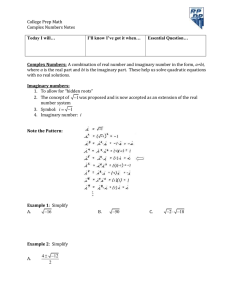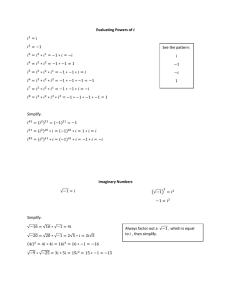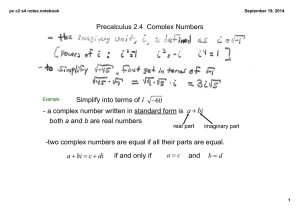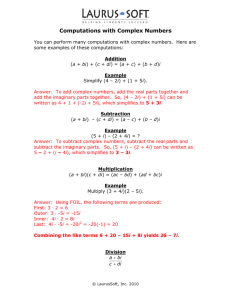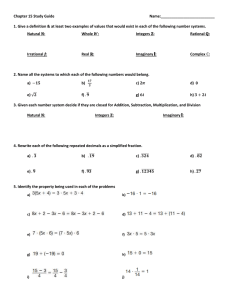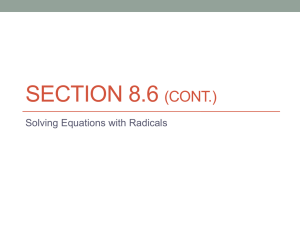1 − = i
advertisement
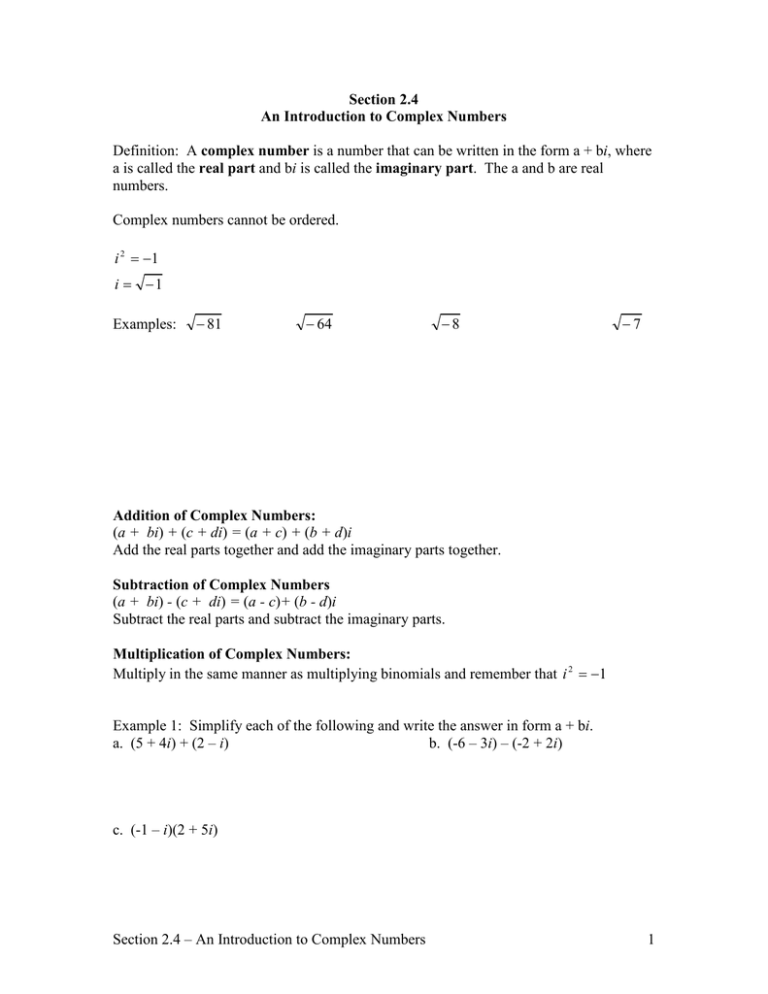
Section 2.4 An Introduction to Complex Numbers Definition: A complex number is a number that can be written in the form a + bi, where a is called the real part and bi is called the imaginary part. The a and b are real numbers. Complex numbers cannot be ordered. i 2 = −1 i = −1 Examples: − 81 − 64 −8 −7 Addition of Complex Numbers: (a + bi) + (c + di) = (a + c) + (b + d)i Add the real parts together and add the imaginary parts together. Subtraction of Complex Numbers (a + bi) - (c + di) = (a - c)+ (b - d)i Subtract the real parts and subtract the imaginary parts. Multiplication of Complex Numbers: Multiply in the same manner as multiplying binomials and remember that i 2 = −1 Example 1: Simplify each of the following and write the answer in form a + bi. a. (5 + 4i) + (2 – i) b. (-6 – 3i) – (-2 + 2i) c. (-1 – i)(2 + 5i) Section 2.4 – An Introduction to Complex Numbers 1 Powers of i i 2 = −1 i 3 = −i i4 = 1 In fact, if k is a multiple of 4 then i k = 1. Example 2: Simplify. a. i 12 b. i 35 c. i 746 Division of Complex Numbers The complex conjugate of the complex number a + bi is the complex number a – bi. a + bi , multiply both the numerator and denominator by the c + di complex conjugate of the denominator. To simplify the quotient Example 3: Simplify each of the following and write the answer in form a + bi. a. 3i −1− i Section 2.4 – An Introduction to Complex Numbers b. 3 − 4i 1 − 3i 2 Complex Roots of Quadratic Equations Example 4: Find all complex solutions of the following equations. Express your answer in form a + bi. a. x 2 + 100 = 0 b. x 2 + 40 = 0 d. x 2 − 6 x = −13 Section 2.4 – An Introduction to Complex Numbers c. 49 x 2 + 36 = 0 e. 2 x 2 + 20 x = −84 3

